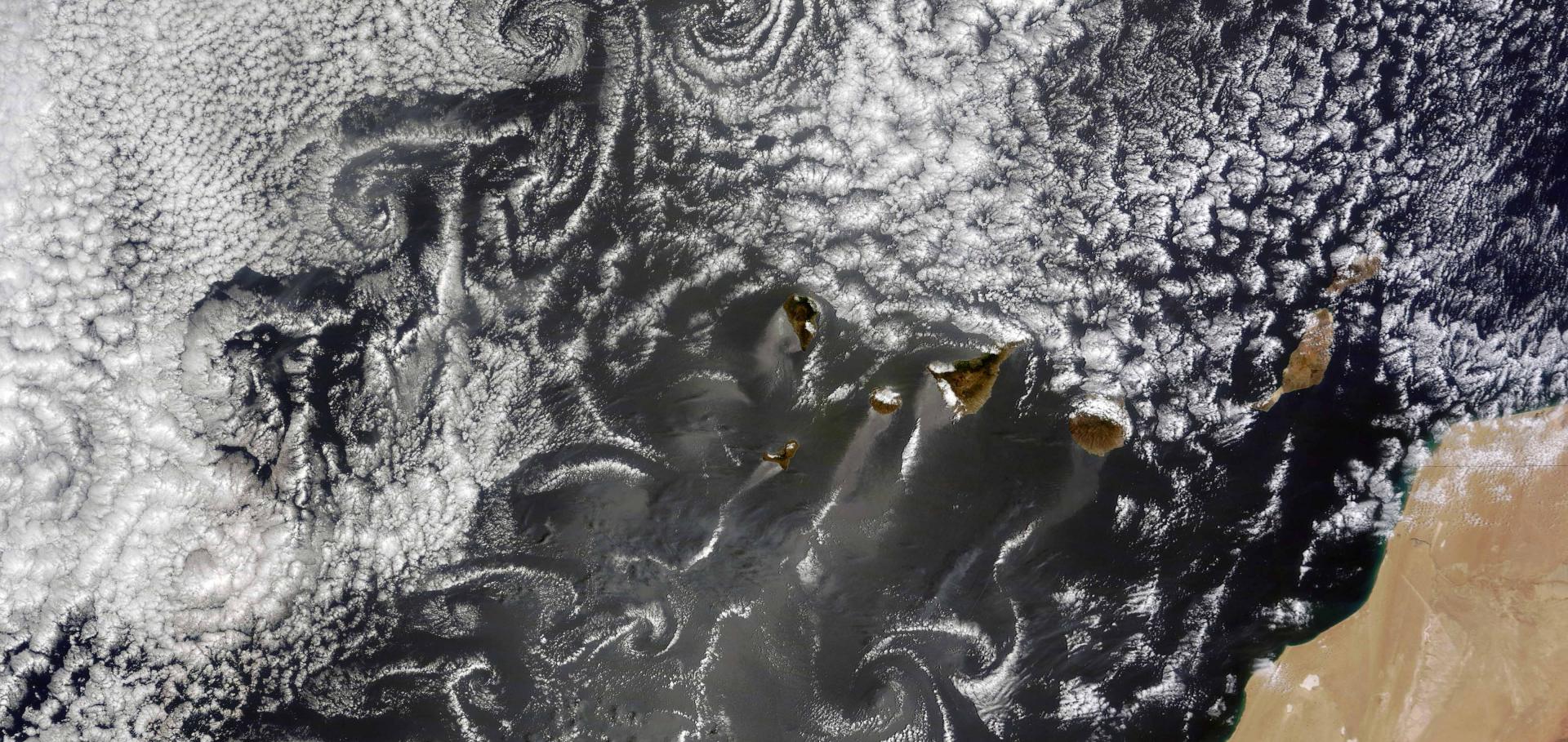Aerosol forcing masks and delays the formation of the North-Atlantic warming hole by three decades
Geophysical Research Letters American Geophysical Union 47:22 (2020) e2020GL090778
Abstract:
The North-Atlantic warming hole (NAWH) is referred to as a reduced warming, or even cooling, of the North-Atlantic during an anthropogenic-driven global warming. A NAWH is predicted by climate models during the 21st century and its pattern is already emerging in observations. Despite the known key role of the North-Atlantic surface temperatures in setting the Northern-Hemisphere climate, the mechanisms behind the NAWH are still not fully understood. Using state-of-the-art climate models, we show that anthropogenic aerosol forcing opposes the formation of the NAWH (by leading to a local warming) and delays its emergence by about 30 years. In agreement with previous studies, we also demonstrate that the relative warming of the North-Atlantic under aerosol forcing is due to changes in ocean heat fluxes, rather than air-sea fluxes. These results suggest that the predicted reduction in aerosol forcing during the 21st century may accelerate the formation of the NAWH.An AeroCom–AeroSat study: intercomparison of satellite AOD datasets for aerosol model evaluation
Atmospheric Chemistry and Physics Copernicus GmbH 20:21 (2020) 12431-12457
Abstract:
<jats:p>Abstract. To better understand and characterize current uncertainties in the important observational constraint of climate models of aerosol optical depth (AOD), we evaluate and intercompare 14 satellite products, representing nine different retrieval algorithm families using observations from five different sensors on six different platforms. The satellite products (super-observations consisting of 1∘×1∘ daily aggregated retrievals drawn from the years 2006, 2008 and 2010) are evaluated with AErosol RObotic NETwork (AERONET) and Maritime Aerosol Network (MAN) data. Results show that different products exhibit different regionally varying biases (both under- and overestimates) that may reach ±50 %, although a typical bias would be 15 %–25 % (depending on the product). In addition to these biases, the products exhibit random errors that can be 1.6 to 3 times as large. Most products show similar performance, although there are a few exceptions with either larger biases or larger random errors. The intercomparison of satellite products extends this analysis and provides spatial context to it. In particular, we show that aggregated satellite AOD agrees much better than the spatial coverage (often driven by cloud masks) within the 1∘×1∘ grid cells. Up to ∼50 % of the difference between satellite AOD is attributed to cloud contamination. The diversity in AOD products shows clear spatial patterns and varies from 10 % (parts of the ocean) to 100 % (central Asia and Australia). More importantly, we show that the diversity may be used as an indication of AOD uncertainty, at least for the better performing products. This provides modellers with a global map of expected AOD uncertainty in satellite products, allows assessment of products away from AERONET sites, can provide guidance for future AERONET locations and offers suggestions for product improvements. We account for statistical and sampling noise in our analyses. Sampling noise, variations due to the evaluation of different subsets of the data, causes important changes in error metrics. The consequences of this noise term for product evaluation are discussed. </jats:p>Constraint on precipitation response to climate change by combination of atmospheric energy and water budgets
npj Climate and Atmospheric Science Springer Nature 3 (2020) 34
Abstract:
Global mean precipitation is expected to increase with increasing temperatures, a process which is fairly well understood. In contrast, local precipitation changes, which are key for society and ecosystems, demonstrate a large spread in predictions by climate models, can be of both signs and have much larger magnitude than the global mean change. Previously, two top-down approaches to constrain precipitation changes were proposed, using either the atmospheric water or energy budget. Here, using an ensemble of 27 climate models, we study the relative importance of these two budgetary constraints and present analysis of the spatial scales at which they hold. We show that specific geographical locations are more constrained by either one of the budgets and that the combination of water and energy budgets provides a significantly stronger constraint on the spatial scale of precipitation changes under anthropogenic climate change (on average about 3000 km, above which changes in precipitation approach the global mean change). These results could also provide an objective way to define the scale of ‘regional’ climate change.Quantifying the sensitivity of aerosol optical properties to the parameterizations of physico-chemical processes during the 2010 Russian wildfires and heatwave
Atmospheric Chemistry and Physics Copernicus GmbH 20:16 (2020) 9679-9700
Abstract:
<jats:p>Abstract. The impact of aerosol–radiation and aerosol–cloud interactions on the radiative forcing is subject to large uncertainties. This is caused by the limited understanding of aerosol optical properties and the role of aerosols as cloud condensation/ice nuclei (CCN/IN). On the other hand, aerosol optical properties and vertical distribution are highly related, and their uncertainties come from different processes. This work attempts to quantify the sensitivity of aerosol optical properties (i.e. aerosol optical depth; AOD) and their vertical distribution (using the extinction coefficient, backscatter coefficient, and concentrations' species profiles) to key processes. In order to achieve this objective, sensitivity tests have been carried out, using the WRF-Chem regional fully coupled model by modifying the dry deposition, sub-grid convective transport, relative humidity, and wet scavenging. The 2010 Russian heatwave–wildfires episode has been selected as case study. Results indicate that AOD is sensitive to these key processes in the following order of importance: (1) modification of relative humidity, causing AOD differences of up to 0.6; (2) modification of vertical convection transport with AOD differences around −0.4; and (3) the dry deposition with AOD absolute differences of up to −0.35 and 0.3. Moreover, these AOD changes exhibit a nonlinear response. Both an increase and a decrease in the RH result in higher AOD values. On the other hand, both the increase and offset of the sub-grid convective transport lead to a reduction in the AOD over the fire area. In addition, a similar nonlinear response is found when reducing the dry deposition velocity; in particular, for the accumulation mode where the concentration of several species increases (while a decrease might be expected). These nonlinear responses are highly dependent on the equilibrium of the thermodynamics system sulfate–nitrate–SOA (secondary organic aerosol). In this sense, small changes in the concentration of one species can strongly affect others, finally affecting aerosol optical properties. Changes in this equilibrium could come from modifications in relative humidity, dry deposition, or vertical convective transport. By itself, dry deposition also presents a high uncertainty influencing the AOD representation. </jats:p>Cloudy-sky contributions to the direct aerosol effect
Atmospheric Chemistry and Physics Copernicus GmbH 20:14 (2020) 8855-8865


